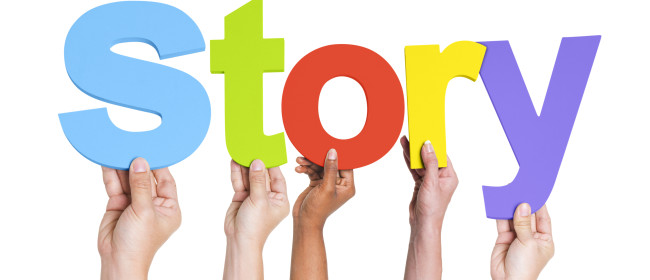Ever felt like your tongue was stuck to the roof of your mouth when asked what you do?
Where to start…how to explain? What do you say?
Your mind is a whirlpool of thoughts as you feverishly grope for the magic words that will make it so intriguing people can’t wait to find out more.
And to your horror, all you come up with in those crucial moments is a dark heavy blankness.
See the problem?
It’s OVERWHELM.
If you’re an entrepreneur seeking to shape your message and image in the mind of your clients, it can be frustrating, sometimes downright painful.
The good news is there’s a surprisingly simple solution that can dramatically change the way you deal with this confusion –
You tell a story.
You see, you have the most powerful device known to man: You.
Your life experience, your story, your message.
A story that is personal carries a universal message. Your story, allows others to see, feel, and experience another world – your world. In it, they find themselves.
Stories are mesmerizing.
They are how humans have passed on wisdom, knowledge and culture for as long as we’ve been around.
Think back to some of your earlier memories from school, and it’s likely that the lessons you actually remember were based in stories.
Think of all the years of generations who have passed on their values from generation to generations and they would stay intact, and you will realize that there’s something kind of magical about a story structure.
When all parts of the story are assembled it can be ingested and then recalled by the person who is receiving it. The appeal of the different aspects of a story coming together as one creates a message that’s easy to digest, remember, and retell.
But.
Your story is powerless if it stays inside of you. If you never pull that story out and share it with the world, it will serve no one.
So, if you want to make your business and your marketing more memorable, then your marketing needs to tell a story.
Stories are one of the best ways to connect with customers and encourage them to take action.
In business, we often focus on objective data, facts and figures, product features, charts, technology and engagement through social media. However, storytelling reaches people on an emotional level. Stories communicate to the listener exactly what you do and what you stand for.
Start crafting your compelling stories, both about yourself and your business.
Most Common Storytelling Mistakes and What to Do About Them
- Making up a story or embellishing. Tell the truth – it is stranger than fiction.
- Telling an oft-told tale or stock story. Relate something unique about how you came to where you are
- Boring your listener with stories that are overly long or too fact-filled. Embrace your vulnerability and have a heart-to-heart talk
- Packing in too much information. Include only the essentials…and it doesn’t have to be in chronological order
- Hiding failures in an attempt to appear successful. Hey, our failures are often the juiciest parts of a good story
So, what’s your story?



